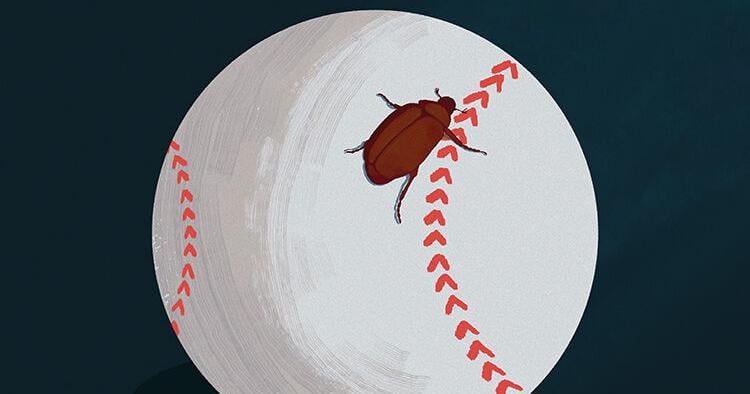
Oh, hello, June. I’ve been waiting for you.
We have had the weirdest weather since you were here last, and I’m ready for you to put on your spring bonnet and sing songs with rhymes of croon, moon and tune. I’m anxious to see you stand en pointe June 20 to mark the summer equinox and very slowly pirouette to summer.
This month we’ll let June’s Gemini and Cancer people shine. I saw an astrological analysis online that stated they are the funniest signs of the zodiac. Go ahead. Show us. We could all use a laugh.
Lots of funny people were born in June. Gilda Radner is one.
Lots of talented people: Marilyn Monroe, Paul McCartney.
And lots of contemplative people: Harriet Beecher Stowe, Dalai Lami.
Also the June bug. Formal name, genus Phyllophaga. That fat, purple plant-eating scarab beetle. Very diverse, the June bug, at least 800 species. The larvae — those white grubs we dig up in the garden — have been living in the soil for three years. Underground they munched roots of plants and crops (especially potatoes, strawberries, corn, pastures and lawns.) In May and June they hatch as beetles to live for one year.
June bugs are nocturnal so when we hear them hissing on warm nights they’re chomping their way through shrubs, trees (especially oak, walnut and maple) and flowers (favorites are chrysanthemums, coreopsis and columbine.) They are repelled, however, by rosemary, lavender, marigold and lemongrass. Turnabout is fair play in Mother Nature’s world. Ask birds, toads, rodents and small mammals and they’ll tell you that June bugs are tasty meals.
I suspect June bugs are frustrated performers because light attracts them, especially white light. They are drawn to street lights and porch lights. I wonder, in those spotlights, if they’re not also reciting Shakespeare soliloquies and belting out show tunes.
June brings the annoying sounds of summer — mowers, blowers and edgers — but also happy outdoor sounds and that unique seasonal call, “Play ball!” June is full of baseball. And baseball lore is full of “Casey at the Bat,” a comic ballad that has become immortal.
Not long ago I gave a reading of this poem for an audience. It’s fun to read aloud with its clanking rhymes and vigorous beat, and it’s fun to hear, too, because it evokes memories of the summer game.
“Casey,” the original title, was published June 3, 1888, in The San Francisco Examiner. It was written by Ernest Lawrence Thayer under a pen name. It is the only thing Thayer is known for and even those who love the poem rarely know the author’s name.
Thayer was born Aug. 14, 1863, in Lawrence, Massachusetts, to a well-to-do family. He graduated magna cum laude in philosophy from Harvard University in 1885. William James, philosopher and psychologist, was his teacher and friend. Thayer was editor of the Harvard Lampoon where William Randoph Hearst was business manager.
Hearst offered him a job as a humor columnist at the San Francisco Examiner. He worked there for two years including one season as a baseball reporter. The last piece he wrote for the paper was “Casey,” relatively unknown until vaudeville performer William De Wolf Hopper made it famous.
For most of his life Thayer distanced himself from the poem — scornful even. He came to consider it more favorably as authorities, authors and poets praised it. One Yale professor called it a native masterpiece with a clear presentation of the psychology of the hero and the psychology of the crowd.
Martin Gardner edited “The Annotated Casey at the Bat,” and it is everything we would want to know about the poem and author. But the poem alone is enough; remember the opening lines and let it transport you to summers of the past:
“The outlook wasn’t brilliant for the Mudville nine that day;
The score stood four to two with but one inning more to play.”
